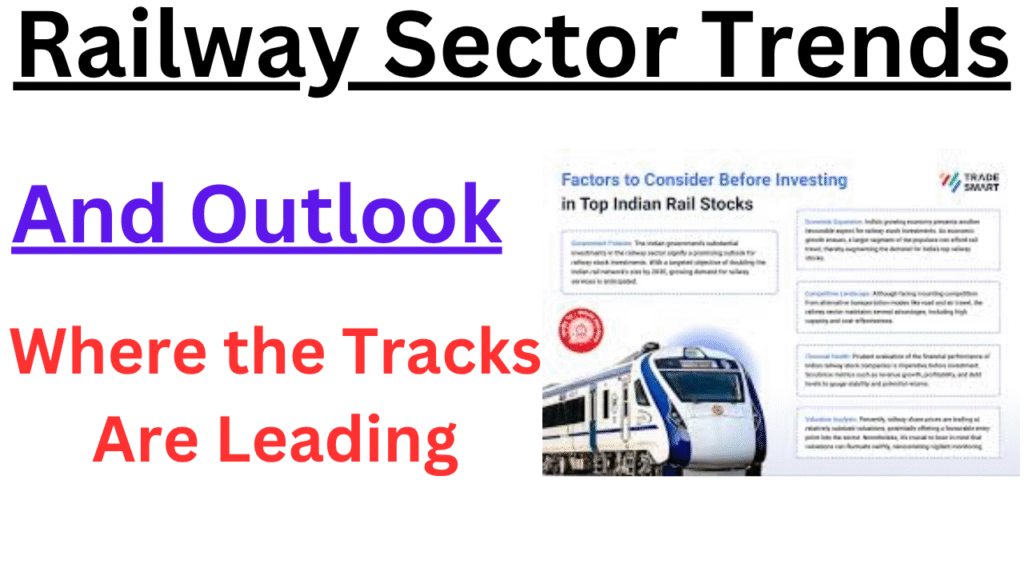
The railway sector has always played a vital role in connecting people, cities, and economies. But today, the industry is moving more rapidly than toward a future described by technology, sustainability, and smarter operations. As global priorities shift and new transformation hit the market, it’s a exciting time to take a closer look at the biggest railway industry trends shaping the sector and where things are heading next.In this blog, we’ll study the key features currently converting railways around the world and what we can predict from the industry’s future.
Table of Contents
1. Technology Takes the Front Seat
If there’s one thing that describes today’s railway industry trends, it’s technology. Railways are now becoming more digital, smarter , and automated overall. From train maintenance to train ticketing , almost every aspect of rail operations is being reshaped by technology railway industry trends.
Many rail companies are investing heavily in AI, big data, and IoT (Internet of Things) solutions. Predictive maintenance, for example, uses sensors to track train components in real time, recognising problems before they cause delays or accidents. Digital ticketing, facial recognition for boarding, and mobile apps offering real-time updates are also becoming the norm. Simply put, technology is no longer an optional upgrade; it’s becoming important for railways to stay competitive and meet modern customer expectations railway industry trends.
2. Sustainability Moves to Center Stage
As weather change continues to control the global agenda, the railway sector is coming forward with its green attempts . Trains are already one of the most eco -friendly forms of public transportation, but the industry is working to push emissions even lower. One major focus area is electrification. Railways all over the world are replacing diesel-powered engines with electric ones, especially on cargo and passenger trains. In places where full electrification isn’t workable yet, hydrogen-powered trains and battery-electric hybrids are gaining traction. Railway stations are also becoming greener, including solar panels, rainwater harvesting systems, and eco-friendly building materials into new designs railway industry trends railway industry trends.
The push toward greener railways isn’t just about meeting official targets, it’s about inviting increasingly environmentally conscious passengers and businesses railway industry trends.
3. High-Speed Rail Is Accelerating
Another major highlight in railway industry trends is the strong growth of high-speed rail (HSR). Governments are bidding big on high-speed trains as a cleaner, faster replacement to short-term flights and congested highways.
While China continues to lead the world in HSR expansion and Europe remains strong, with cross-border networks linking cities efficiently. Meantime, countries like the United States, India, and even parts of Africa are stepping up their investments into new high-speed rail corridors.
As technology improves and costs come down, expect even more cities, especially rising megacities, to be connected via bullet trains in the coming decades.
4. Cargo Rail Finds New Power
Passenger trains often get the spotlight, but cargo rail is quietly undergoing its own change. With global supply chains stretched and sustainability pressures rising, rail is becoming an progressively attractive mode for transporting goods.
Modern logistics are all about speed, reliability, and visibility. Cargo rail operators are incorporating digital tracking systems, offering customers real-time updates on their cargo. Bitcoin is also starting to find a place in cargo rail, helping improve transparency and security across the supply chain.
Dedicated freight corridors, like the ones India is building, aim to separate cargo from passenger traffic, boosting efficiency and cutting delays.
Multimedia transport perfectly connecting rail, road, sea, and air logistics is also becoming a priority, creating faster and greener end-to-end shipping solutions.
5. Urban Rail Systems Are Expanding Fast
Urbanization is one of the strongest forces shaping the modern world, and city rail systems are feeling the impact. To fight traffic crowding , reduce pollution, and support growing populations, cities are rapidly expanding their metro, light rail, and passenger train networks.
Driverless metros are emerging everywhere, offering smoother, more frequent service. Contactless fare systems are making public transport more easy . Some cities are even combining ride-sharing services and bike rentals directly into metro station hubs to make the journey completely seamless.
6. Customer Expectations Are Shifting
Today’s passengers expect more from their train journeys than just going from one place to another. Comfort, connectivity, and customization are now becoming just as important as reliability and speed.
Railway operators are moving forward with:
- Free, high-speed Wi-Fi onboard.
- New carriage designs focused on comfort, workspace options, and accessibility.
- Loyalty programs and personalized travel deals.
- Mobile apps offering real-time train status and trip planning.
Luxury and tourism-oriented train services are also seeing a resurgence. Think lavish rail experiences like the Venice Simplon-Orient-Express or Japan’s Seven Stars, catering to travelers looking for something unforgettable.
Challenges Ahead
While the railway industry trends are overwhelmingly positive, it’s not all smooth tracks ahead. Challenges include:
- Political and regulatory hurdles that delay major projects.
- Aging infrastructure in older networks, especially in North America and parts of Europe.
- High infrastructure and technology costs.
Navigating these challenges will require smart investment strategies, public-private collaboration, and a commitment to long-term innovation.
Conclusion
The railway industry is at a major crossroads but in the best way possible. Driven by revolution , sustainability, and rising demand for smarter travel options, railways are entering a golden age of evolution.
For businesses, investors, policymakers, and travelers alike, staying on top of railway industry trends isn’t just useful but also essential. Those who understand where the sector is heading will be better positioned to thrive as the landscape continues to evolve.Whether it’s digital upgrades, greener trains, or high-speed connections, one thing’s clear: the future of railways is fast, smart, and sustainable. And that’s a journey well worth boarding.
